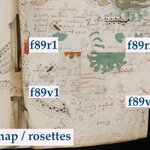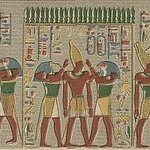Science History

The Voynich Manuscript Part 9 : An Amateur's Work?
I am nearly ready to publish my results of a semantic (topical) analysis of the Voynich manuscript. My programs have generated a wealth of output data which now needs to be written up and made available as a download. The raw data files are meaningless without explanation, but the write-up would comprise too many word lists to be presentable as an ordinary article. An article covering this semantic analysis is in preparation. In the meantime, I can state that an in-depth analysis by topic shows that the VM is, to a…

We had this question posed to us in one of my classes. Here is my answer:
Did the existence of nuclear weapons cause a dramatic change in the conduct of foreign policy or the options available to nuclear states? Why or why not?
To answer this I'll off with a quote from Mao Tse-Tung: Weapons are an important factor in war, but not the decisive one; it is man and not materials that counts. To get to the crux of issue whether nuclear weapons caused a dramatic change an examination of linking the military and weapons to the policy creating branch of the government.
We can think of the state,…

I have just read a letter in Chemistry World (September 2009, p40) by A J Dijkstra, who has just translated the first ever book on lipid chemistry from French into English. This book is Recherches chimiques sur les corps gras d'origine animale, Paris, 1823, by Michel Eugène Chevreul. His long life (1786 – 1889) took him from before the French Revolution to the inauguration of the Eiffel Tower. Chevreul had a long and varied scientific career, as his Wikipedia biography relates.
The focus of Dijkstra’s letter is the several uses to which Chevreul applied melting point analysis. One of…

Scientific happenings, big and small, on this day in history…
But first, today’s quiz: What favorite American snack food was invented on this day by chef George “Speck” Crum in response to a picky customer that complained that the chef’s french fries were too thick? Chances are, most of you reading this have enjoyed a serving or two of these sometime this past week. Not sure? Check out the answer at the end of the article.
On to other historic happenings…
79 ADMount Vesuvius Eruption
The eruption of Vesuvius on 24 and 25 August, 79 AD, led to the destruction of the Roman cities of Pompeii and…

The Voynich Manuscript Part 8 : Some Notes On Writing Systems
Since I wrote Part 7 of this occasional series of articles about the Voynich manuscript I have been heavily engaged in writing programs to analyse the Voynich text. This will take quite a bit more time, as it requires the creation - and debugging1 - of multiple programs to test each linguistic theory component from various perspectives. For example, I propose the theory that the Voynich symbols - I prefer to call them glyphs - are non-obvious representations of sounds and do not necessarily comprise a simple…

Ancient Egypt : Recommended Resources
There are times when I find that anything I may write on a topic has already been written to a very high standard by someone before me. In such cases, I prefer to refer my readers to those sources.
Image from Project Gutenberg, courtesy of David Widger.
Because you are not an ‘expert’ in a particular field, it does not mean that you have to accept or be intimidated by other so-called ‘experts’. Let logic, reason and unbias guide you toward the truth. As you wade through the various views, keep in mind Sir William Oster’s words: "The greater the…

This is not an article in my continuing series about the Voynich manuscript. It is a complaint about plagiarism.
buckrogers2012 is a plagiarist.
buckrogers2012, a blogger on blogspot.com has copied my entire series of Voynich articles into his blog, complete with pictures.
My name doesn't appear as author.
Although there are links to scientificblogging.com there are no clear links to my original articles, my blog or my name.
Please check http://ancientcivilitazionandufo.blogspot.com/search/label/MYSTERIES where you will see what I am complaining about.
I am grateful when bloggers cite…

When did executions go from being functional example-setting to being more humane in method?
Annulla Linders, a University of Cincinnati sociologist, examined newspaper accounts of 19th and 20th century Ohio executions to put more 'scientific' executions in context.
Linders used two late 19th century executions to illustrate the transition from hanging to electrocution and determined that central to the switch was the audience of executions - including journalists and physicians.
As an example, newspapers and other commentators praised the swift hanging of Valentine Wagner at the…

The Voynich Manuscript Part 7 : Further Dating Studies
I present here more evidence in support of my suggestion that the Voynich manuscript may date from a period between 1350 to 1450, perhaps even earlier. This is part 7 of an occasional series which commenced in part 1 with information about Wilfrid and Ethel Voynich.
Merlons and Bartizans.A Bartizan is a turret which overhangs a fortified wall. Merlons are the parts of fortified walls between the gaps of castellations, crenellations or battlements. Merlons come in many shapes. The most common shape in Europe…

I have often found reference to medieval and early modern folks most helpful in debugging things that have bugged me since I did science when I was a student in the Sixties (for me they did not swing). One particular bunch are the Oxford Calculators, also known as the Merton scholars. As the Wikipedia article states:
They first formulated the mean speed theorem: a body moving with constant velocity travels the same distance as an accelerated body in the same time if its velocity is half the final speed of the accelerated body. As an application of this, in the De probationibus (ascribed to…